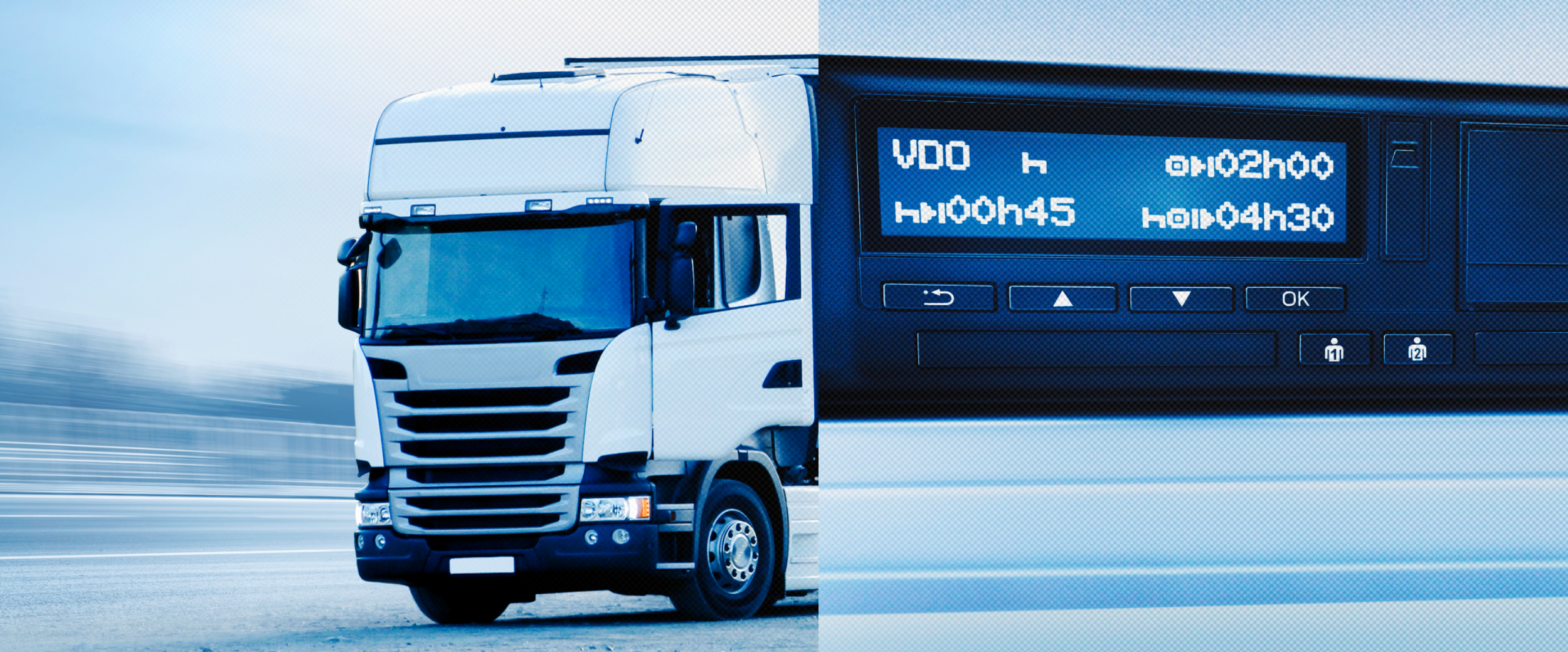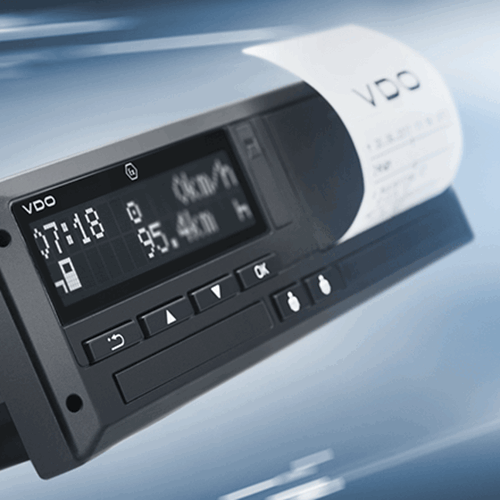The New EU Tachograph Directive: Smarter Tachographs.
A new era began for the digital tachograph from June 15, 2019. From this date on, all registered trucks should be equipped with the new generation digital tachograph. These tachographs utilise fully digital technologies, such as satellite-based geopositioning, short-range communication for supervisory authorities, and compatibility with a large number of other telematics services and useful apps.
The introduction of the new devices is the result of the implementation of EU Directive 165/2014. It aims to improve road traffic safety, and to ensure binding social standards are adhered to, along with safeguarding competition within the single European market. It also aims to make the manipulation of digital tachographs virtually impossible. The DTCO® 4.0 is the smart tachograph from VDO, which satisfies these requirements optimally.
Checks of a Moving Vehicle Based on Reasonable Suspicion Using DSRC
DTCO® 4.0 features three key new technologies. First of all, the integrated DSRC interface (Dedicated Short Range Communication) allows preliminary information to be queried in the event of roadside checks. This means that a vehicle check can be performed during the journey. The DSRC interface of the DTCO® 4.0 uses wireless technology to send a defined minimum volume of data to the DSRC readers of any highway patrol officers driving past, or to the relevant infrastructure, such as gantry signs, following authentication. In doing so, only vehicle data and information about safety violations, and any malfunctions that have occurred, are queried. Only when irregularities are uncovered will the respective truck be stopped for a more thorough inspection. There will, however, be no “automatic punishment” on the basis of data records that fail to comply with the code. If there are no grounds for suspicion, then drivers and logistics companies will save the time that an inspection could otherwise take. And an inspection can, on average, last up to three-quarters of an hour. This will allow the supervisory authorities in the EU member states to take more specific action against any “black sheep.” It will also help ensure operations at carriers that act in compliance with the law can proceed more smoothly, and will increase safety on the roads. And all this without requiring any extra personnel.







